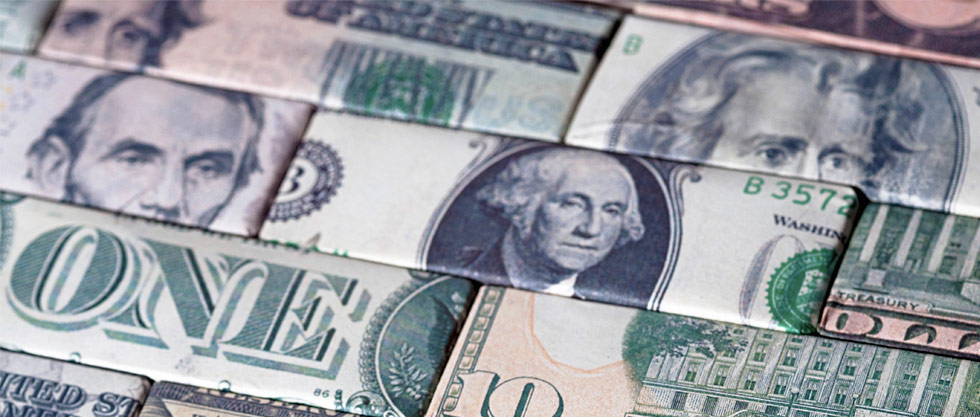
Debt is about as American as hot dogs, apple pie and Harrison Ford.
We see it everywhere. We all know someone who has been paying on their school here's a test loans for an eternity or who never seems to be done paying their credit card bills. And while we can pass the blame around for our country’s obsession with debt all day long, our politicians haven’t been much better. Few have ever met an expense they didn’t like, and the idea of a balanced budget in Washington is about as foreign as an American tourist on the moon.
As we move closer to the November election, we decided to take a look into the history of our nation’s debt, using some of America’s more notable presidents—those featured on our currency—as milestones along the way.
Here’s what we found.
George Washington
George Washington, America’s first president who’s also on the dollar bill, kicked off the country’s debt obsession. When he left office in 1796, America had already accumulated nearly $84 million of debt. That didn’t take long!
Thomas Jefferson
By the time Thomas Jefferson left office in 1808, the national debt had actually decreased to $65 million. In fact, during Jefferson’s eight years in office, the debt dropped around $18 million. So not only was President Jefferson an amazing writer, an expert horticulturist, and the face of the $2 bill, but he also knew a little bit about money management.
Andrew Jackson
Andrew Jackson killed $58 million of debt in just seven years. He definitely earned his famous face appearing on the $20 bill! Jackson accomplished the debt payoff mainly by selling western land and blocking nearly every spending bill that came his way.
For a while, the country was even operating under a surplus. A surplus! But then Jackson divided up the profits among the states, the state banks printed way too much money, and the country headed into a brutal depression.
Abraham Lincoln
Almost anyone can identify Abe Lincoln as the face of the penny and the $5 bill. He was also the president when the Civil War began in 1861. Abe’s presidency began with just over $90 million of national debt. Thanks to the war, that number skyrocketed to $1.8 billion by the time of his death in 1865. To give you some perspective, that’s a 2,700% increase! America has never recovered from that surge.
Ulysses S. Grant
Ulysses S. Grant, the face of the $50 bill, took office in 1869. When he left in 1876, the national debt stood at $2.2 billion, a number that stayed pretty steady until Woodrow Wilson arrived on the scene in 1913.
Franklin Roosevelt
The next national debt explosion occurred during World War II. Franklin Roosevelt, who you might recognize from the dime, was president from 1933 until 1945. The debt rose from $22 billion to $201 billion during that time. That number hasn’t decreased since.
American Debt Today
These days, the national debt continues to grow like weeds on an overgrown lawn. It’s actually in the trillions now. Our debt has risen from $2 trillion in Ronald Reagan’s tenure to $5 trillion during Bill Clinton’s to $19.3 trillion under President Obama. And who knows where our national debt will go once the new president gets elected in November?
Here’s some good news, though. Just because Washington, D.C. has no idea how to balance a budget or cut spending doesn’t mean you have to follow in their footsteps. You don’t have to embrace debt as a way of life.
You don’t have to embrace debt as a way of life.
In fact, what if you took it a step further and led the people around you out of debt and into a bright debt-free future? You know what it takes to get out of debt and work toward financial peace. You could be the one to get the ball rolling in your community and make debt a thing of the past.
Pay off debt fast and save more money with Financial Peace University.
And who knows? Maybe even the suits in Washington will catch on!

